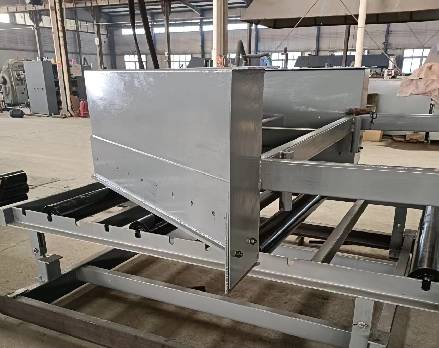 Afrikaans
Afrikaans  Albanian
Albanian  Amharic
Amharic  Arabic
Arabic  Armenian
Armenian  Azerbaijani
Azerbaijani  Basque
Basque  Belarusian
Belarusian  Bengali
Bengali  Bosnian
Bosnian  Bulgarian
Bulgarian  Catalan
Catalan  Cebuano
Cebuano  Corsican
Corsican  Croatian
Croatian  Czech
Czech  Danish
Danish  Dutch
Dutch  English
English  Esperanto
Esperanto  Estonian
Estonian  Finnish
Finnish  French
French  Frisian
Frisian  Galician
Galician  Georgian
Georgian  German
German  Greek
Greek  Gujarati
Gujarati  Haitian Creole
Haitian Creole  hausa
hausa  hawaiian
hawaiian  Hebrew
Hebrew  Hindi
Hindi  Miao
Miao  Hungarian
Hungarian  Icelandic
Icelandic  igbo
igbo  Indonesian
Indonesian  irish
irish  Italian
Italian  Japanese
Japanese  Javanese
Javanese  Kannada
Kannada  kazakh
kazakh  Khmer
Khmer  Rwandese
Rwandese  Korean
Korean  Kurdish
Kurdish  Kyrgyz
Kyrgyz  Lao
Lao  Latin
Latin  Latvian
Latvian  Lithuanian
Lithuanian  Luxembourgish
Luxembourgish  Macedonian
Macedonian  Malgashi
Malgashi  Malay
Malay  Malayalam
Malayalam  Maltese
Maltese  Maori
Maori  Marathi
Marathi  Mongolian
Mongolian  Myanmar
Myanmar  Nepali
Nepali  Norwegian
Norwegian  Norwegian
Norwegian  Occitan
Occitan  Pashto
Pashto  Persian
Persian  Polish
Polish  Portuguese
Portuguese  Punjabi
Punjabi  Romanian
Romanian  Russian
Russian  Samoan
Samoan  Scottish Gaelic
Scottish Gaelic  Serbian
Serbian  Sesotho
Sesotho  Shona
Shona  Sindhi
Sindhi  Sinhala
Sinhala  Slovak
Slovak  Slovenian
Slovenian  Somali
Somali  Spanish
Spanish  Sundanese
Sundanese  Swahili
Swahili  Swedish
Swedish  Tagalog
Tagalog  Tajik
Tajik  Tamil
Tamil  Tatar
Tatar  Telugu
Telugu  Thai
Thai  Turkish
Turkish  Turkmen
Turkmen  Ukrainian
Ukrainian  Urdu
Urdu  Uighur
Uighur  Uzbek
Uzbek  Vietnamese
Vietnamese  Welsh
Welsh  Bantu
Bantu  Yiddish
Yiddish  Yoruba
Yoruba  Zulu
Zulu belt conveyor head pulley
The Role of Head Pulleys in Belt Conveyors
Belt conveyors are widely used in various industries for transporting materials efficiently. Among the critical components of a belt conveyor system, the head pulley plays a vital role in its functionality and overall performance. Understanding its significance, design, and maintenance can enhance the efficiency of material handling and increase the lifespan of the conveyor system.
What is a Head Pulley?
A head pulley is located at the discharge end of the conveyor belt, where materials are released from the belt. It serves as a driving mechanism that provides the necessary tension to keep the belt moving smoothly. The head pulley is typically larger than the tail pulley and is connected to a motor, which drives the conveyor belt forward. This component can be manufactured from various materials, including steel and rubber, depending on the application's specific needs.
Functionality and Importance
The primary function of the head pulley is to facilitate the movement of the conveyor belt while ensuring proper load distribution. As the motor drives the pulley, the belt wrapped around it rotates, transporting materials from the feed end to the discharge point. The head pulley also aids in maintaining belt tension, which is crucial for preventing slippage and contributing to the overall efficiency of the conveyor system.
belt conveyor head pulley

Moreover, the design of the head pulley affects the performance of the conveyor. For instance, a rubber-coated head pulley can enhance friction, leading to better belt traction. Conversely, a smooth metal pulley might be used in applications requiring minimal friction, such as in cumulative systems where multiple belts converge.
Maintenance Considerations
Regular maintenance of the head pulley is essential for ensuring the longevity and effectiveness of the conveyor system. This includes inspecting the pulley for damage, wear, or misalignment. Proper alignment is critical, as a misaligned head pulley can cause excessive wear on the belt and other components, leading to increased operational costs.
Lubrication of the girder bearings is another crucial factor in maintaining the head pulley. Adequate lubrication reduces friction, minimizes wear, and extends the lifespan of the pulley. It is vital to follow the manufacturer’s guidelines regarding lubricants and maintenance schedules.
Conclusion
In summary, the head pulley is an integral component of a belt conveyor system, affecting its overall efficiency and performance. By understanding its role, functionality, and maintenance requirements, industries can optimize their material handling processes and enhance productivity. Regular inspections and maintenance practices can prevent costly downtimes, ensuring that the conveyor system operates smoothly and efficiently, thereby contributing to the success of various industrial operations. As technology and industrial processes evolve, the role of the head pulley will continue to be pivotal in the advancement of conveyor systems.
-
Revolutionizing Conveyor Reliability with Advanced Rubber Lagging PulleysNewsJul.22,2025
-
Powering Precision and Durability with Expert Manufacturers of Conveyor ComponentsNewsJul.22,2025
-
Optimizing Conveyor Systems with Advanced Conveyor AccessoriesNewsJul.22,2025
-
Maximize Conveyor Efficiency with Quality Conveyor Idler PulleysNewsJul.22,2025
-
Future-Proof Your Conveyor System with High-Performance Polyurethane RollerNewsJul.22,2025
-
Driving Efficiency Forward with Quality Idlers and RollersNewsJul.22,2025





























